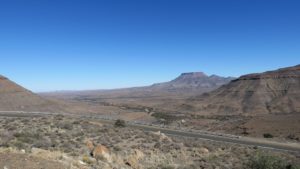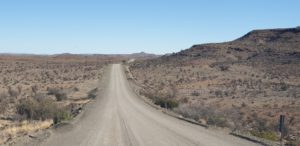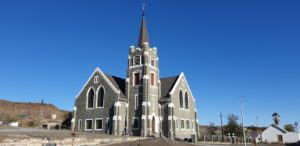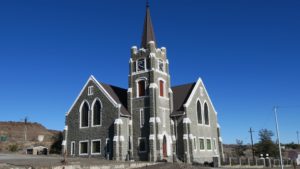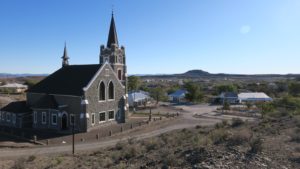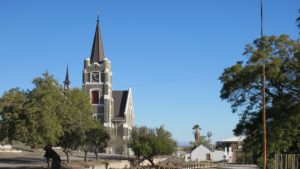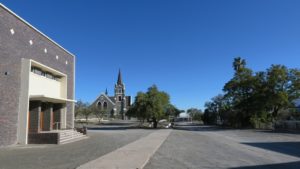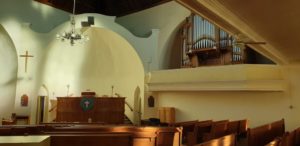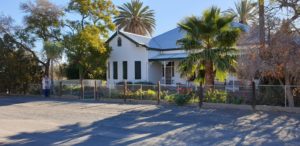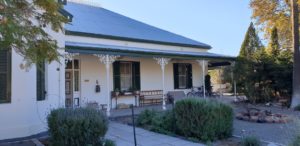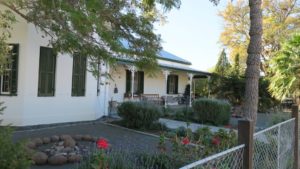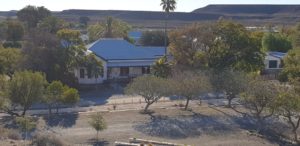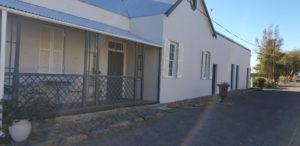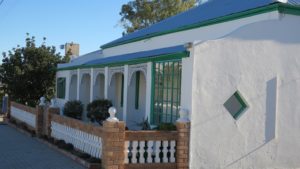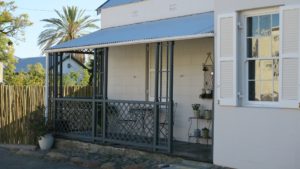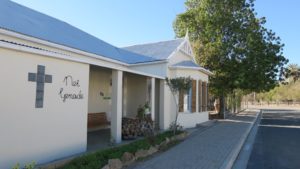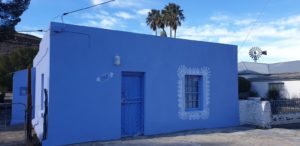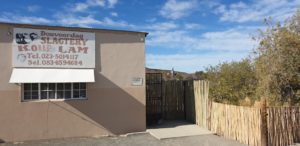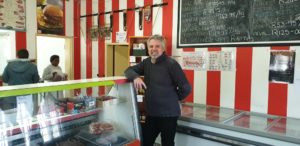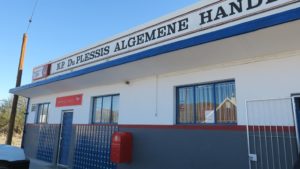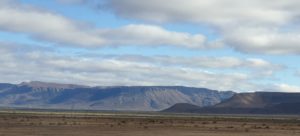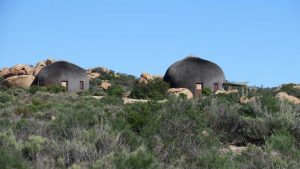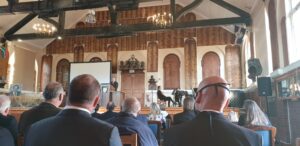We leave Loxton on a gravel road, the R356, for Fraserburg. Is the road in a good condition? I think so, but I think the secret of any gravel road travel is low speed. At high speed you will get flat or written-off tyres and it is also easy to lose control over your vehicle. I drive at 60 km/h which gives me ample time to enjoy the scenery and avoid ditches, and if I really have to drive through them my vehicle is not damaged (nor Anette’s nerves). Last year, when we travelled to the Tankwa Karoo National Park, I was forewarned about the notoriously bad road conditions. So I read up on 4×4 forums and I also spoke with local farmers I knew, and I got contradictory advice – some believe you have to over-inflate your tyres and others believe you have to under-inflate them in order to minimise the damage to your tyres. So I thought I will inflate them at the normal pressure and just drive slower than the 80 – 120 km/h the others like to do. Just in case, I took a second spare wheel as well as aerosols to inflate flat tyres with. I have not used any of these – in fact, my tyres were not even superficially cut or scarred by the stones, even though I do not use hardened 4×4 tyres but soft city tyres.
The road is very quiet and we only pass two vehicles of which one was a local farmer (admittedly it was a Sunday morning and most locals would have been attending church). You can see for long distances, and more than once we see a lonely hawk flying. It is quite dry although there is a farm house here and there that still seems to have access to a dependable borehole or two. Someone told us that there are already more than 200 abandoned farms in the Central Karoo that are too dry to farm.
Arriving at Fraserburg we drive a bit around town, look at the church and so on, but it is Sunday afternoon and we are not expecting to see much action.
We leave on the R353 towards the N1 which was, last time I drove down here, a gravel road but is now tarred. The road is new and after a while we descend down the Theekloof pass where the new road ends at the bottom where you cross the Northern Cape to Western Cape border. From here it is still tarred but an older and more narrow road, but still fine. A couple of kilometres further we reach the turn-off to Merweville to the right. This is also a gravel road and here it is very clear that this area is bone-dry. Almost no shrubs, let alone grass – it is more desert than semi-desert. It is unbelievable how farmers survive here and yet some do.
As we enter Merweville we immediately identify its impressive church building. The main reason why we came to Merweville was to see where the Afrikaans TV-series “Die Boekklub” was filmed. We think it is one of the best Afrikaans series we have seen so far. Our guest, Ester Fourie, of the guest house “Net Genade” (meaning by grace alone) is by pure coincidence also the secretary of this congregation and she offers to show us the church inside and tell us its history. For those that watched “Die Boekklub” will remember that the church and its pipe organ played quite some role in the story. The son-in-law of Ester’s neighbour was the scriptwriter of “Die Boekklub” and knew the town and its inhabitants well. Ester tells us that more than a 100 years ago the townspeople were tired of travelling all the way to Beaufort-West every weekend to attend church services and decided to build their own church. They have also named the town Merweville after their previous pastor Ds. Van der Merwe in Beaufort-West.
The moment Anette, who also plays the organ, lays her eyes on the organ she falls in love with it. Ester notices this and offers to switch on the organ so that Anette can give it a try. What a beautiful sound! When Anette finishes, both she and Ester are in tears.
Every autumn the congregation organises a festival (“Dankfees”) and people from all over (even Cape Town) attends and buys local produce of which mutton and biltong is the most popular. They have a good weekend together with laughter and dance.
We take pictures of the rectory just opposite the church. This house was used as the guesthouse the lead actor owned in the story. We also take pictures of other locations that featured in the series.
Monday morning, on our way back home in Stellenbosch, we drive passed the Douvoordag butchery (another landmark from the series) and stop to look inside. Everything still looks the same. We buy droëwors because they have run out of biltong.
We take the tar road back which joins the N1 at Prince Albert Road station. For a moment Anette and I consider the possibility to continue to Prince Albert, but we have done this last year and it is probably best if we finish our road-trip while we are still willing to return home. So we get onto the N1 south for a nice breakfast at the Laingsburg Wimpy and a safe return home that afternoon.
There are só many places to see in South Africa, the one more fascinating and beautiful than the other. Who knows what next winter will bring?
